Picture the following: on the way to your blind one fine morning in search of a big buck, you happen to step wrong. You happen to severely twist your ankle while you go down, leaving you stranded and with only a single bottle of water. You’re hunting in a secluded spot and even if you have the first aid skills to make a splint, you have less than a day’s worth of water with you.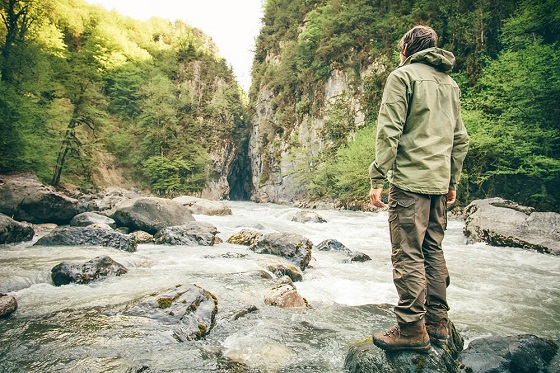
In more extreme situations, such as desert hunting, it becomes even more imperative. Finding water in these circumstances can be challenging enough, but you also need to know how to purify it even then or you risk making yourself quite ill.
The ability to purify water, even without specialized equipment, is another important thing to know. Even running water can be suspect, and making yourself violently sick while trying to survive isn’t going to help you out at all.
Once you’ve learned these skills, however, the applications become endless anywhere you can’t reach a tap or just buy a bottle from the nearest convenience store.
Self-reliance is an important part of hunting and by learning how to find and purify drinking water you definitely increase your odds of survival in case of an adverse event of any sort.
How to Find Water in the Wilderness
It does you little good to have all the purifying equipment in the world if you can’t find water to purify. There’s a variety of methods that you’ll want to be able to employ as the situation demands. There is no one size fits all solution to this sort of problem.
General Methods
For the most part, these ways of finding water are able to be used no matter where you’re at. This is particularly cool, since most of us aren’t always hunting in the dense woods that non-hunters tend to imagine.
Basic Awareness
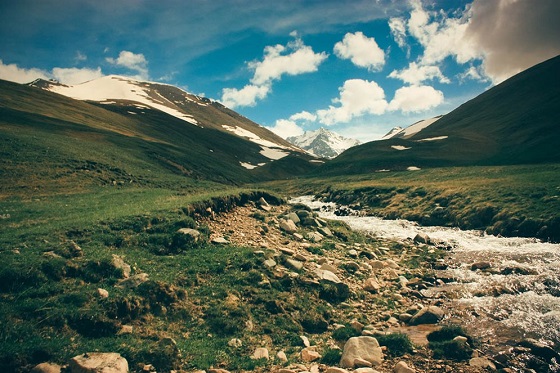
Start with the basics. Slow down and listen. Running water has a distinctive sound and you can usually hear it a long ways off. Clear running water is your best bet, but it will largely depend on what filtration and purification methods you have available to you at the time.
If you’re unfamiliar with the area, look for green vegetation and go towards it. The greener the better, and you’ll quickly find the plant types change as you get closer to a creek, stream, or other body of water. If it’s sizable, you’ll be able to feel the humidity as well.
Observe Animals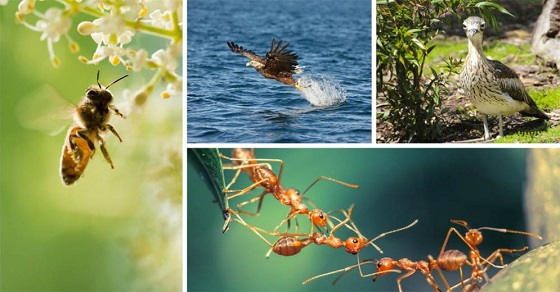
Watching animal behavior: is one of the best methods around. Where there are animals there’s bound to be water, since they need it to survive just as much as we do. Of course, following a doe to the nearest watering hole isn’t exactly going to help much, so instead you’ll have to learn some other tricks.
Insects, for instance, can often lead you to sources of water you’d never see otherwise.
- Bees, for instance, require freshwater at regular intervals and this means that they’ll need to build their nests within a couple of miles of a source of it. They’re not the best indicator, but they will definitely let you know that there’s water somewhere within reach.
- Ants, on the other hand, can lead you directly to it. Seeing a line of ants going up a tree and into a hollow may indicate a source of water which has soaked through the wood.
- Likewise, birds can be one of the best indicators. Birds will tend to guide their flocks towards water, which means that seeing a group of them there’s usually water nearby. They’ll tend to be flying close to the ground and quickly on their way to water, and they’ll often be slow and almost meandering their way through the tree tops while leaving it.
- Not all birds are good indicators, however. Carnivorous birds, for instance, have a huge range and get most of their moisture from their prey. This means that just seeing a hawk isn’t going to mean there’s water around.
- Oddly enough, water dwelling birds like geese and duck are not a particularly good indicator. These birds often fly high and for rather large distances between bodies of water.
- Mammals are an iffy bet. Looking for well-worn animal trails can be a good idea. One thing to keep in mind here, however, is that pigs and some other mammals are never too far from a source of water so following their tracks can be a good start.
Collect Rainwater
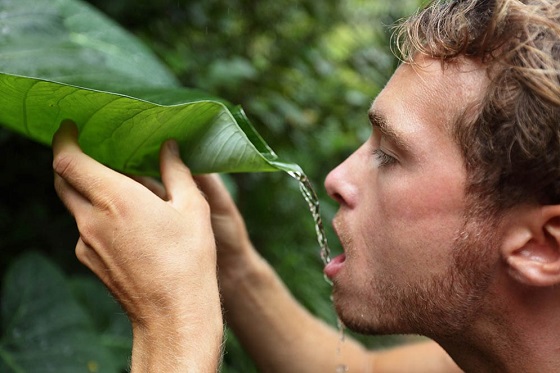
Collecting rainwater is an option during the rainy season. There’re a few different ways but depending on your gear you might be limited to just having to use any containers you have on you in order to collect whatever falls.
Funnels are extremely useful for this, and you can pretty easily find foldable ones online. One or two of these won’t take up much room in your bag and they can come in handy for emergency situations.
You can also set up a tarp or cloth which is slightly permeable and stretch it between several trees with whatever is available. Paracord should always be in your bag anyways, but pretty much anything will work. Place a small rock in the center to create a pronounced “dip” in the center.
After you’ve got the intial setup finished, you can place a pot or any kind of container underneath. The water will run to the dip saturate it, after this happens it will run into the waiting container.
Collecting Dew
You can also collect dew if the vegetation and conditions in the area allows for it. The easiest way to do this is to simply drag some kind of absorbent cloth along with you while you go. Then you’ll be able to wring it out into a cup in order to gain a fairly clean source of water.
There is one thing to keep in mind when utilizing this method: avoid poisonous plants. The dew may absorb some of the toxins from the plants and this can get you sick or even be fatal depending on what the plants are and how much of the dew you drink.
Dew can be collected in a less efficient manner by simply shaking it off bushes into a wide mouthed container, but unless you’re in a ridiculously cold area it’s probably a better idea to just use your shirt.
Fruits and Vegetation
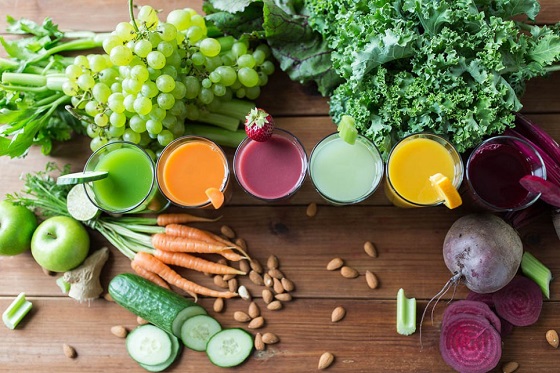
While it’s more of a last ditch effort than anything, you can also find fruits, vegetables, and even benign plants and crush them to release their water content. You won’t be able to gain much, but anything can help to starve off terminal dehydration.
This works well in both tropical and desert environments. Cacti, in particular, can be utilized quite well in this manner. Their pulp contains a ton of water, but you’ll have to carefully remove the spines from most of them before doing so.
As always, be careful not to use any poisonous plants. You don’t want to end up drinking hemlock juice or anything. If you’re unsure of a plant, avoid it.
Collecting Plant Transpiration
Plants release a lot of water into the air by pulling the water from the roots and into the undersides of the leaves in order to keep themselves hydrated. You can take advantage of this part of the plant’s metabolism in order to get water for yourself instead of allowing it to vaporize.
Tie a canvas bag, or cloth shaped to resemble a bag, around the leaves of the plant in the early morning. Weigh it down with a rock like you would when collecting rainwater. Place a container under the dip and go about your business.
Over the course of the day, you’ll end up with a substantial amount of water left in your container.
Checking Tree Crotches and Rock Crevices
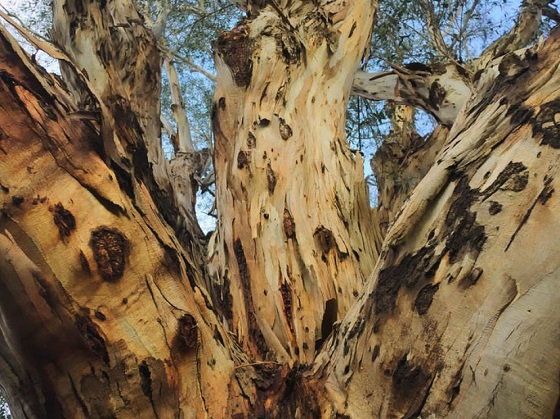
Wherever there areas in the shade, there is bound to be some water. Check in the forks and crotches of trees in the area, and look around for cracks and crevices in rocks. There are quite a few areas where you may be able to find water.
Now, it won’t be much but if you can even get a half cup you’re better off than when you started.
The easiest way to do this is to stick a piece of cloth into the water in order to absorb as much as possible and wringing it out. This works especially well for rock crevices, but it’s a method you can use to gather water pretty much anywhere you find it that’s too small to scoop up.
Make a Solar Still
Dig a pit and place green foliage into it as well as a container in the center.
Then stretch a plastic sheet over the entire affair, anchor it at the sides with dirt or sand. Clear plastic works best, since the sun will be able to penetrate it better. At this point, place a small rock over the center of the plastic in order to create a dip directly above your container.
You’ll make your life a lot easier if you have a small piece of tubing with you. Surgical tubing is actually pretty handy for other things and a small five to eight foot length of it doesn’t take up much room. If you do have it, run it before you place the anchor and leave it along the side. This makes a straw of sorts, so you don’t have to disassemble the still to drink from the water.
The water generated this way will be clean. Be wary of the greenery you use, however, as poisonous plants may be able to pass their toxins along.
